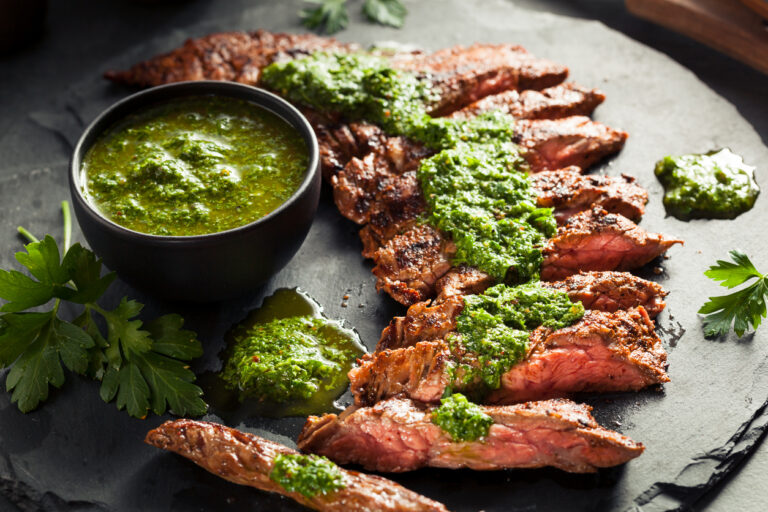Introduction: Argentine cuisine in South America
Argentina is renowned for its rich cultural heritage, vibrant history, and scenic beauty. However, what is often overlooked is its distinctive cuisine, which sets it apart from other South American countries. Argentine cuisine is a fusion of European, indigenous, and African culinary traditions that have been adapted and transformed over time. The result is a unique cuisine that is world-famous for its grilled meats, rich desserts, and delectable empanadas.
Meat, meat, and more meat: The prominence of beef in Argentina
When it comes to Argentine cuisine, the first thing that comes to mind is meat. Argentina is one of the largest meat-consuming countries in the world, and beef is the undisputed king of meats. Argentine beef is renowned for its flavor and tenderness, owing to the country’s vast pampas grasslands, where the cattle graze freely. Argentine beef is cooked in various ways, from grilled steaks to slow-cooked stews. The meat is often seasoned with salt and cooked over an open flame to bring out its natural flavor.
Grill it up: The Argentine asado tradition
The Argentine asado is a quintessential part of Argentine cuisine and culture. It is a social event where friends and family gather to enjoy an assortment of grilled meats, sausages, and chorizos. The meat is slow-cooked over an open flame using wood or charcoal, which imparts a smoky flavor and caramelizes the meat. The asado is usually accompanied by salads, chimichurri, and plenty of wine. It is a communal affair that brings people together and celebrates Argentina’s love for meat.
Empanadas, the Argentine way
Empanadas are a staple in Argentine cuisine and are made using a variety of fillings. The most popular filling is ground beef, onions, and spices, which is known as carne picada. Empanadas can also be filled with chicken, cheese, ham, or corn. The dough is made with flour, water, and lard, and is rolled out and filled with the desired filling before being folded and baked. Empanadas are often served as a snack or as a meal accompanied by salads or mashed potatoes.
Chimichurri, the iconic Argentine sauce
Chimichurri is a sauce that originated in Argentina and is a must-have accompaniment to grilled meats. It is made with parsley, garlic, olive oil, vinegar, and red pepper flakes. The sauce is tangy, pungent, and herbaceous, and adds a burst of flavor to grilled meats. Chimichurri is often used as a marinade or drizzled over grilled meats, and is an essential part of Argentine cuisine.
Influence of Italian cuisine in Argentina
Argentina has a significant Italian population, and Italian cuisine has had a profound influence on Argentine cuisine. Argentine pizza is a popular dish that features a thick crust and is often topped with ham, cheese, and olives. Pasta is another staple in Argentine cuisine, and dishes like spaghetti carbonara and lasagna are ubiquitous in restaurants. Italian desserts like tiramisu and panna cotta are also popular in Argentina.
Desserts to indulge: Dulce de leche and alfajores
Dulce de leche is a caramel-like sauce made by heating condensed milk and sugar. It is a ubiquitous ingredient in Argentine desserts and is used to fill pastries, cakes, and cookies. Alfajores are a type of cookie that is filled with dulce de leche and coated with powdered sugar or chocolate. They are a popular snack and are often paired with mate, a traditional Argentine tea.
Argentine wine, a perfect complement to the cuisine
Argentina is known for its excellent wine, and it is the perfect complement to Argentine cuisine. Malbec is the most popular wine in Argentina and is known for its deep color and robust flavor. It pairs well with grilled meats and brings out the natural flavors of the meat. Other popular Argentine wines include Bonarda, Cabernet Sauvignon, and Torrontés. Argentine wine is an essential part of Argentine cuisine and is enjoyed by locals and tourists alike.
In conclusion, Argentine cuisine is a unique blend of European, indigenous, and African culinary traditions that have been adapted and transformed over time. It is a cuisine that celebrates meat, from grilled steaks to slow-cooked stews and delectable empanadas. Argentine cuisine is also known for its rich desserts, iconic sauce, and excellent wine. Argentine cuisine is a testament to the country’s cultural diversity and is a must-try for anyone visiting Argentina.

